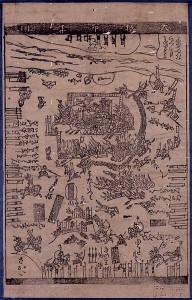In an  expanding colony, news is crucial for further growth and expansion.
expanding colony, news is crucial for further growth and expansion.
The Pennsylvania Gazette, one of the most popular sources of news in the the 1700s, provided readers with thanks in part to the genius and gumption of Benjamin Franklin.
Franklin, a true Renaissance man in every sense of the word, would take a long-winded paper and turn it into the most read newspaper in the colonies. However, his love for writing and printing was not a God-given; it was inherited.
As a youth in New England, Franklin was an avid reader, even though he dropped out of school at the age of 10. He then worked for his father for a brief stint as a blacksmith until at the age of 12 when he became an apprentice printer for his brother James.
As an apprentice to James, Franklin found a love for printing and was able to get more involved after James founded The New-England Courant, which was considered the first independent newspaper in the colonies. Franklin planned to write pieces for the publication but James refused his requests for submission.
Under the alias, Silence Dogood, a middle-aged widow, Franklin wrote letters to The Courant that were published and became major talking points in the town. In In his work, Franklin most often used pseudonyms, such as Silence Dogood for The Courant and Richard Saunders for Poor Richard’s Almanack. When James discovered that it was his brother writing the letters, he became furious with Benjamin. Franklin left his apprenticeship and his family for Philadelphia, Pa. at the age of 17.
Franklin’s passions for printing, reading and writing would prove essential in his endeavor to start up his own newspaper. In 1729, Franklin bought the The Universal Instructor in all Arts and Sciences: and Pennsylvania Gazette from Samuel Keimer and shortened the name to The Pennsylvania Gazette.
His expertise with printing along with reading and writing helped in the transformation of the Pennsylvania Gazette into the “best-looking, best-written, liveliest and most profitable newspaper in the colonies,” according to Mitchell Stephens’ A History of News. Franklin printed The Gazette and wrote pieces for the publication under different aliases.
Some of the most relevant pieces that were published in The Gazette included an account by Franklin on the kite experiment that he claimed to have performed himself. Also, the first political cartoon was published in America, known as the Join or Die cartoon, that stressed the importance of colonial unity.
The publication was discontinued in 1815, twenty-five years after the death of Ben Franklin. However, his legacy has lived on to the future generations.
Ben Franklin’s contributions to American journalism have been beneficial to newspaper printing, production and layout throughout the country’s history. His works will forever instill him as one of the most influential people in American history.








